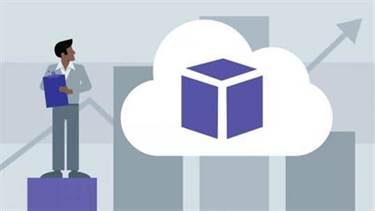Unlike hosted private clouds, on-premise cloud solutions allow users to host a cloud environment internally. For such a cloud model, it is necessary to have an internal data center to host the cloud server. This type of private cloud model is very secure as they are internally hosted and managed by an organization’s internal IT department. The organization, therefore, has complete control over the security, configurations, and scalability of its servers. A private cloud or an internal cloud is where the IT infrastructure is solely dedicated to a single organization, unlike a public cloud where the computing resources are shared among multiple tenants. A private cloud environment is ideal for businesses for whom meeting regulatory requirements, security and control are a priority.
Traditionally, a private cloud is hosted at a company’s data center and uses its own hardware. However, an organization may outsource hosting to a third-party provider who remotely manages the computing resources. Multicloud is the practice of using a combination of clouds — two or more public or private clouds, or a combination of both, from several cloud providers. A multicloud approach allows businesses to select the best services from different cloud vendors based on their budgets, technical requirements, geographic locations and so on. This model enables businesses to use different clouds for different purposes.
What are the customer’s responsibilities?
Further, PaaS solutions are self-service and easy-to-use, ready to be implemented with minimal intervention from a third-party vendor. PaaS, along with a private cloud, can enable more efficient https://globalcloudteam.com/ utilization of the available resources and power business processes. One of the risks of implementing a fully private cloud environment is that it might lead to gradual sprawl and fragmentation.

The history and evolution of cloud computing date back to the 1950s and 1960s. It is elastic — users can have as much or as little of a service as they want at any given time. DR. Cloud offers faster recovery than traditional on-premises DR. Furthermore, it is offered at lower costs. Users can be more productive because they can access work presentations and spreadsheets stored in the cloud at anytime from anywhere on any device. Businesses can save money with software as a service because they don’t have to design and develop the software themselves. It makes sense for companies to use SaaS products that meet their business requirements because they can quickly be more productive.
Types of Cloud Computing — an Extensive Guide on Cloud Solutions and Technologies in 2023
All hybrid clouds include multi-clouds; however, not all multi-clouds include hybrid clouds. When some connectivity or orchestration links numerous clouds together, they constitute hybrid clouds. ClaimVantage is an example of a SaaS offering built on the Salesforce PaaS as the foundation of our claims and absence management products. We know that being truly cloud-native gives our customers the greatest benefits of the cloud.
- When the application is developed completely, the user will now trigger the event to execute the code.
- A hybrid cloud gets created by merging the resources of the cloud service with the private cloud, which is an incompatible distributed system.
- Software-as-a-Service is a way of delivering services and applications over the Internet.
- An end user can provision computing capabilities, such as server time and network storage, eliminating the traditional need for IT administrators to provision and manage compute resources.
- These emerging cloud services have evolved to meet technological innovations and tend to be cloud-native rather than traditional on-premises solutions.
- Analyze the computer requirements for your firm, including performance speed, trustworthiness, agility, and connection.
At the highest level, cloud computing is delivered through a combination of service and deployment models. Within each of these cloud delivery models there are three types of cloud computing and as a service -aaS offerings to choose from. Today, cloud computing has transitioned to become a mainstream technology, with many different types of cloud computing to choose from. An astonishing 94% of enterprises are estimated to be using at least one cloud service, according to the latest State of Cloud report.
What is platform as a service (PaaS)?
How do you create an organization that is nimble, flexible and takes a fresh view of team structure? These are the keys to creating and maintaining a successful business that will last the test of time. For example, you can create a new web application in Microsoft Azure where you can just upload your code and a hosted database to store your data. Since not every element of existing infrastructure can be cloud-enabled, there might be compatibility issues with adopting PaaS solutions.

With PaaS, developers and programmers gain access to not only IT infrastructure but also application/software platform and solution stack. Some of the examples of PaaS include AWS Elastic Beanstalk, Google App Engine and Microsoft Azure. This cloud solution is a marriage between public clouds and private clouds. With a hybrid cloud, organizations utilize the cost-effective resources of the public cloud, while maintaining some on-premises data centers. Hosted private cloud vendors offer cloud servers in their own data centers and are also responsible for security management.
What’s the largest SaaS company in the United States?
Although the phrase “the cloud” conjures images of puffy, soft things that lack any solid substance, the digital version of clouds is rooted in physical and virtual infrastructure. The cloud consists of a very real, reliable network of infrastructure thats host all the provider’s data and services. Workloads often operate while behind the user’s network in private clouds, which is supposed to increase security, but it all relies on how safe your safety is.

Organizations can auto-scale and load-balance different workloads based on the performance characteristic they want to achieve. These are sometimes called the cloud computing stack because they are built on top of one another. Knowing what they are and how they are different, makes it easier to accomplish your goals. These abstraction layers can also be viewed as a layered architecture where services of a higher layer can be composed of services of the underlying layer i.e, SaaS can provide Infrastructure. One key drawback deterring widespread private cloud implementation is the lack of scalability.
How to Choose Between SaaS vs. PaaS vs. IaaS
An enterprise-ready Kubernetes container platform with full-stack automated operations to manage hybrid cloud, multicloud, and edge deployments. Either way, having multiple clouds is becoming more common across enterprises that seek to improve security and performance through an expanded portfolio of environments. You can have a dedicated cloud on a public cloud security solutions cloud (e.g. Red Hat OpenShift® Dedicated) or on a private cloud. For example, an accounting department could have its own dedicated cloud within the organization’s private cloud. Don’t worry; we won’t get too technical; this is more of a refresher for people who’ve had some exposure to the cloud and an introduction to those who are just joining the party.

